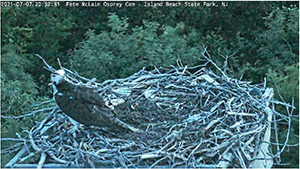This is the seventh installment of the “Science of the Shore Column" written by Bianca Charbonneau, Phd candidate. Have a science question you would like answered? Email Bianca at [email protected]
Succession occurs in many habitats worldwide and it is the observed ecological process of change in the species composition of a community (a group of organisms) over time. It can be thought of as the maturing of a system and the time scale can be decades or even millions of years. Generally, you will see an increase in size and complexity (grasses vs. trees) in later vs. younger successional communities which are replaced by other species over time.
Dunes are a really great place to learn about succession because the process was discovered on them and you can see the communities - it is the gradual increase in complexity that you may have noticed as you walk up a beach path through the dune system.
Henry Chandler Cowles formalized the concept of succession in 1899 while studying the lacustrine dunes of Lake Michigan; the research is entitled The Ecological Relations of the Vegetation on the Sand Dunes of Lake Michigan and you can find its various parts freely available online to download and read. Of note, before Cowles formalized the concept, French naturalist Adolphe Dureau de la Malle coined the word succession in the early 19th century and in 1859 Henry David Thoreau used the term. Cowles observed that species facilitate one another such that one species will dominate an area until that species ‘passes the baton’ to the next and is replaced in what he called a relay floristics model. In most systems one community is replaced by the next until you reach a climax community and it can take a lot of time to reach a climax community. Coastal and lacustrine dunes are a classic model of succession because the age and complexity of the system increases linearly with distance from the ocean, beginning with the formation of the primary dune (aka foredune) and ending in a maritime forest climax community.
On dunes, we see clear lines and zones of ‘belt-like communities’ that can be readily distinguished by a change in vegetation between different habitats along the successional gradient; these different zones are called seres or seral communities. Dune succession beings with the colonization of storm disturbed areas by hardy pioneer species (such as American Beachgrass). To become established, pioneers must cope with occasional storms and extremely stressful daily habitat conditions (heat, salt spray, low nutrients and water). However by becoming established, pioneers build up the foredune and reduce the stressful conditions for colonization in areas behind it, the secondary dune or interdune meadow, by less stress-tolerant intermediate species.
Cowles believed succession was controlled by forces outside of the system (i.e. weather and storms), and his contemporaries believe it is driven within biologically from plant facilitation and completion. However, in reality both likely contribute and their relative importance will depend on the system. Regardless of the impetus, succession continue towards a climax community unless or until ‘the clock is setback’ from a disturbance like a storm which can and does restart the whole process by taking the dune system back down to bare beach.




